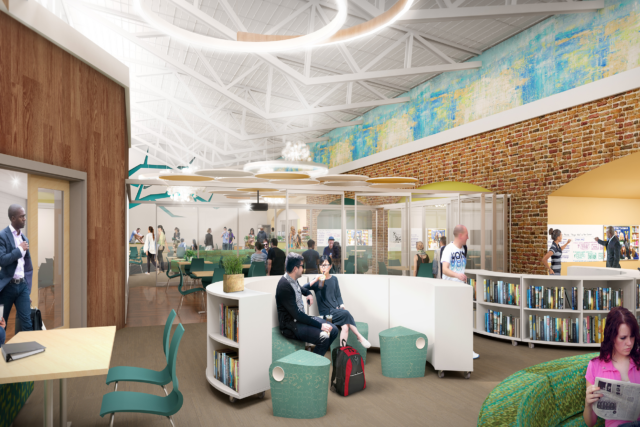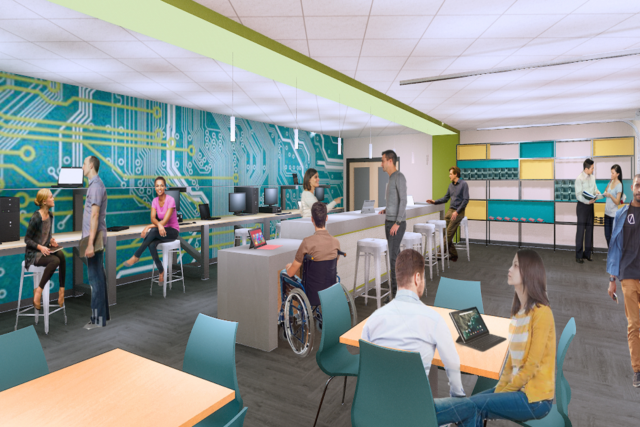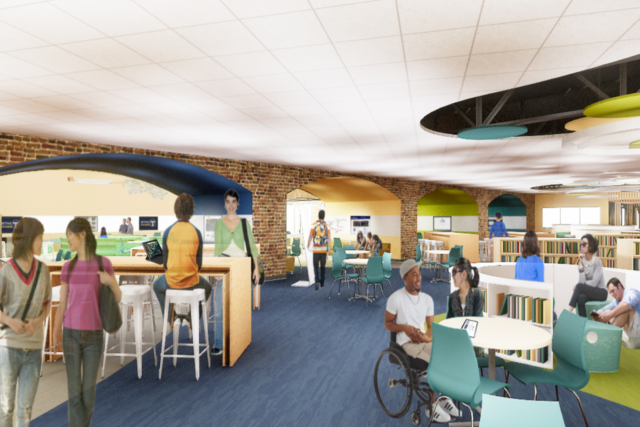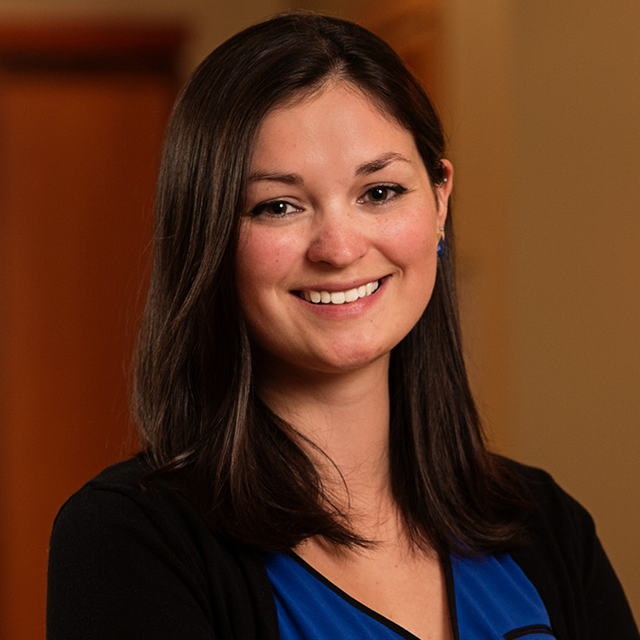From Circulation Desk to Circuitry Tech: The Versatility of the Modern Library

The library is evolving, reinvented by the emerging ways we learn and teach with technology. But what does that mean for educators?
Past
For thousands of years, libraries have served as central hubs for knowledge around the world. Though models and systems have evolved, the founding principal of the library system has remained the same—self-improvement and accomplishment through learning.
In the beginning of the twentieth century, steel tycoon and philanthropist Andrew Carnegie built and stocked just under 1,700 libraries across the United States, revolutionizing the American library system. Carnegie knew the immeasurable value of education, and ensured these libraries and their stores of knowledge were accessible to the entire community—men and women, children, and people of all cultural backgrounds.
These well-stocked buildings were full of endless towers of books, journals, and other texts that any citizen could access for his or her own use. While this traditional model probably seems familiar to most, the essential functions of a library have been shifting—once again—towards a new mode.
Present
There is no doubt that the world has changed from Carnegie’s industrial era to the age of information. Since the 1980s, Digital Natives (people who grew up in a digital world) have been traversing the largest virtual library of all—the Internet. These days, access to school-provided laptops and tablets keeps K-12 students constantly connected via these portable, handheld devices. A few clicks of a button grants anyone access to information on every topic imaginable, from viral animal videos to breaking research on the latest scientific advances.
This, among many other factors, has led to libraries that focus less on physical, printed texts. While the concept of a bookless library may have seemed impossible, it now seems almost expected. Librarians and patrons need not fear a biblioclasm, however. Providing books and other texts remains one of the core functions of the library, especially in early education settings where literacy is heavily promoted. In fact, ten out of twelve librarians cited “Providing Books/Periodicals” in the top three most prominently used functions in their libraries. This study shows that while digital information sources are increasingly more important, “analog” sources still stand the test of time.
As the ways we learn evolve with technology, libraries are becoming multi-purpose spaces. They no longer serve the sole purpose of storing bulky tomes. The integration of technology into our lives means that libraries are becoming rooted in versatility. For instance, the Cincinnati Public Library transitioned into a fully-mobile model back in 2007. Patrons can walk into the library, check out and return books, and pay library fines all through interactive self-checkout kiosks.
On a smaller scale, many local libraries cited tablets, laptop computers, and other small hand-held devices as technology that is currently available for patron use. Lisa Ferri, a librarian at Fairport High School, further describes the library as a place where “personal technology [is] seamlessly integrated with library resources in a café-type atmosphere.” While many K-12 libraries host scheduled in-school classes, they also serve as a place for students to supplement their classes with self-guided learning and exploration.
Internet access and personal computing aren’t the only forms of technology to have an impact on the library. Virtual reality (VR) has also begun infiltrating the educational market, with trends such as immersive storytelling and gamification (the incorporation of educational content in video games) becoming more and more popular in K-12 schools. VR allows students and users to experience digital collections of museums, buildings, and other distant places from their own location in first-person. This technology could allow users to learn about archaeological sites not only through written word, but also through a virtual tour of the site itself.
Additionally, a rise in popularity of the “Maker Movement” has led to an increase in demand for DIY, tinkering, and craft spaces. Technological tools such as 3D printers, laser printers, and design software are often expensive and unobtainable for most people. Libraries have started to fill that void, providing spaces for tech buffs, entrepreneurs, and craftspeople to experiment and create with their own ideas.
Many LaBella clients already utilize this technology. Designs implemented for the Thomas High School library in Webster, New York, include a Technology Bar. This space, modeled after examples from Google Headquarters and Apple Genius Bars, allows students to bring their own one-to-one technology to be fixed by other Thomas High School students. In this way, the library serves as a place to learn about how things work while promoting STEM Education in the local community.
Along this line, many librarians discussed the increasing importance of classes, programs, and collaborative meeting spaces within their libraries. A 2016 contest sponsored by the Knight Foundation challenged libraries to implement innovative ideas to better serve their communities. The North Onondaga Public Library in Cicero, New York, was selected as one of the winners with their Library Farm concept. Much like a traditional library promotes literacy, the Library Farm promotes food literacy, allowing users to experience gardening firsthand, as well as learn from local experts about food and farm culture. Similarly, the Ivan Green Primary School library in the East Irondequoit Central School District implemented their own butterfly and herb garden so students can experience life sciences firsthand.
Future
So—with so many options, what does the future of libraries entail? Whether they provide physical or electronic books, offer a quiet space away from the classroom, or the ability to print 3D models is up to the community the library serves. But, a few key takeaways remain. In reality, it all stays true to Andrew Carnegie’s original vision—make knowledge and education accessible to all.
To accomplish this, designers, librarians, and educators should plan libraries to remain open and flexible, featuring fewer built-in items and more movable furniture with plenty of power and data connectivity. One prime example of a successful implementation of these design elements is the library at Laurelton Pardee Intermediate School in East Irondequoit, New York. Here, LaBella worked with library staff to create a space that aligned with students’ visions.
Stationary book stacks were removed or relocated to create a more open, flexible floor plan. At the same time, a variety of fully mobile tables, chairs, lounge pieces, technology, and storage were purchased to allow for a variety of learning environments to coexist within one space. Because of this, students are now able to use the library to grab a book and settle in a comfortable corner for individual study, meet at a collaborative station where they can connect their personal devices into a shared screen, group tables together to complete a hands-on project, and so much more. Most importantly, the new library design allows students to take control of the space and how it functions.
Justin Hoenke of Benson Memorial Library in Titusville, Pennsylvania, summarizes the endeavor best: “The library of the future is a library that listens closely to the needs of its individual community and responds to those needs first and foremost.” Planning the library in this way will ensure that it’s successful throughout future changes and trends. And while the new model feels futuristic and pioneering, it is part of the library’s evolution that is as old as history itself. In Andrew Carnegie’s words—over 100 years ago—“A library outranks any other one thing a community can do to benefit its people. It is a never failing spring in the desert.”



About the Author
Danielle Lewis, CID, IIDA, WELL APSenior Interior Designer
Danielle is a Certified Interior Designer and WELL Accredited Professional with a focus on K-12 and higher education projects. She recognizes trends in pedagogy that cross over from both markets and strives to create spaces that prepare learners for graduation and beyond. Danielle is passionate about designing learning environments that enhance student success, joy, and well-being, and believes that the best designs stem from engaging with stakeholders early in the process to craft solutions that capture the clients’ visions and goals.